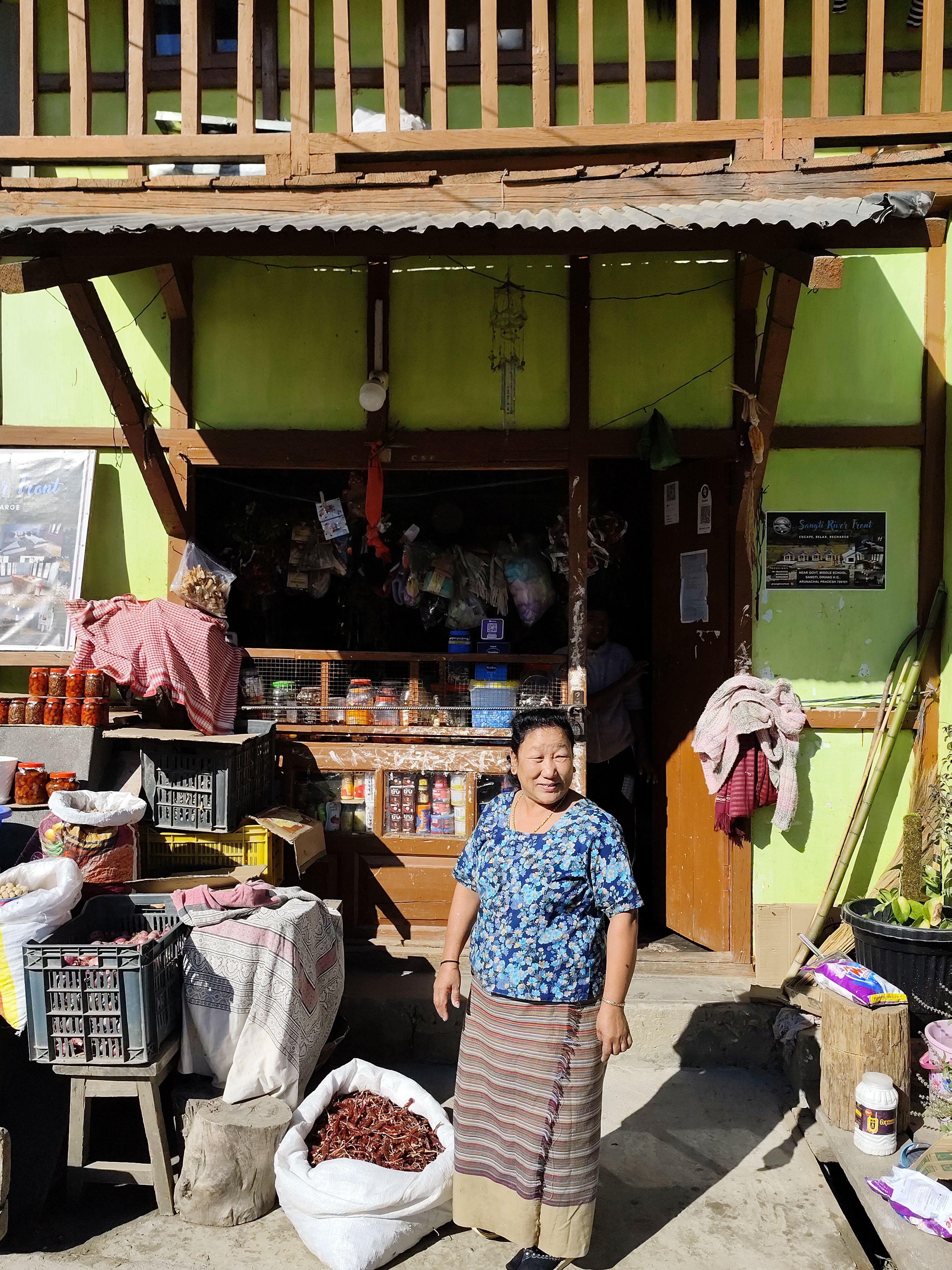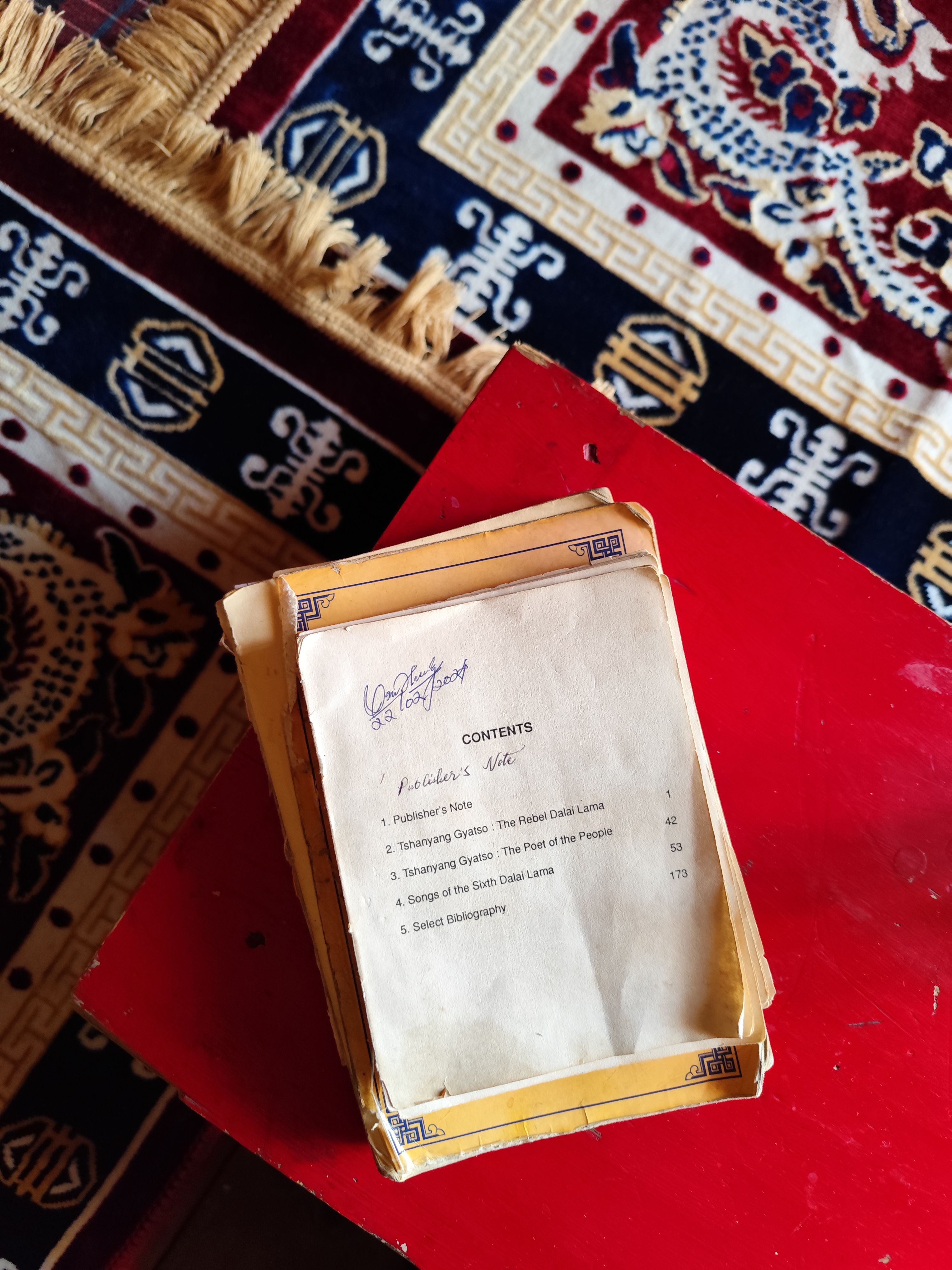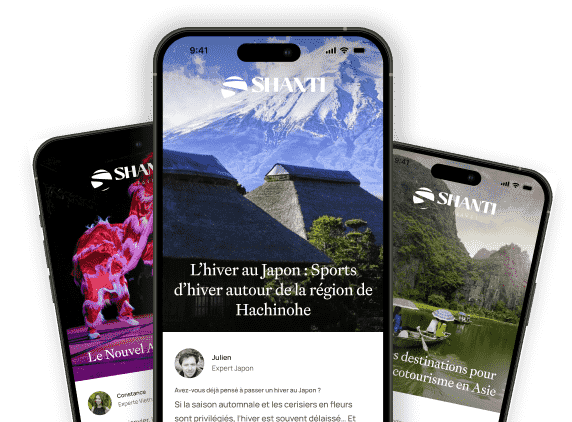Arunachal Pradesh: At the Edge of Silence
Set off on a unique adventure into the heart of Arunachal Pradesh, a region where grandiose landscapes meet centuries-old traditions and genuine moments of sharing. Allow yourself to be captivated by an India off the beaten track, between monasteries, mountain villages and moving encounters.

Another World at the End of the Road
We left the Assam plains behind to reach the western Arunachal Pradesh, this little-known region squeezed between Bhutan and China. I say "western" because Arunachal actually consists of two worlds: in the east, a warmer climate, agricultural lands, almost arid. In the west, where I went, the mountains rise, the cold sets in, and the scenery changes radically.
From the moment we hit the road, something shifted. Crossing the last villages of Assam, I was torn between curiosity and anticipation. During a stop in a small border town, I immediately sensed a subtle but striking difference: here, even though there were eight foreigners, the looks were less intense, softer, almost shy. This road leading straight to the mountains seemed to invite us on a timeless journey.

The further we went, the sharper the bends, the rougher the jolts. The cold crept into the car, and motion sickness began to show. I understood why we were taken in a 4x4 rather than a bus: here, the roads are battered, narrow, sometimes clinging to cliff edges.

We eventually stopped at an inn, Jamri Homestay, and there, I felt the adventure really begin. The hosts welcomed us with simple kindness, around a meal very different from what I’d known in Delhi or even in Assam: steaming soups, spicy yet comforting dishes, perfect to face the 3°C evening chill. The language spoken here is nothing like Hindi. It resembles Bengali, and the faces of the locals recall those from Nepal or Bhutan. Everything is different. Even the silence.

What I was living there was nothing like my stay in Assam. There, we slept in resorts, total comfort, almost disconnected from the local reality. Here, everything is rawer, closer. We sleep in locals' homes, warmed by a fire in the center of the room, wrapped under several blankets. At night, we eat all together around the fire, bundled up in layers, hoping the night won’t be too freezing.
Even everyday gestures bring me back to essentials. We often eat with a spoon, unlike Delhi where hands are the norm. This small detail made me reflect: how many times have I summarized India based on what I know of Delhi, when in fact, it is an endless patchwork of cultures, languages, and rituals?
Here, there are no modern showers or European toilets. We wash with hot water from a bucket, old-style. The toilets are squat style, no paper, just a small nozzle for rinsing. Far from my European habits, of course, but I found a form of freedom in it.
Even the dogs are different. At our hosts', there was a small fluffy white dog, the opposite of the Desi dogs seen in Delhi or Assam streets: skinny, stray, often mistreated. Here, it seemed part of the family, calm and pampered.
No more "princess life" in the sun. Welcome to a tougher, truer India, yet infinitely more touching. Arunachal didn’t just unsettle me; it shook me. It reminded me that true travel begins where comfort ends.
To experience such immersion and discover the wild beauty of the Indian Himalaya, embark on a trip to the Indian Himalaya and let Arunachal Pradesh surprise you.
Silence, Mountains, and Prayers: A Suspended Morning in Dirang
I woke up early that morning to enjoy the view a bit. The day before, we had arrived at night, and I felt a little lost, not really knowing where I was. But stepping out of the room, I froze. Right in front: a peaceful river, bordered by majestic mountains. It was breathtaking. The silence was only disturbed by the gentle lapping of water, an incredibly calming atmosphere.

A little later, the whole group gathered for a very local breakfast. Hot chai (essential!), an omelette, chapati, dal, and bhat. A generous meal, perfect for the long road ahead.
We drove about 1h30 before arriving at Thupsung Dhargye Ling Monastery in Dirang. In this area, Buddhism is mainly practiced, probably due to proximity to Bhutan. I mostly saw monasteries, very few Hindu temples. That day, I saw for the first time a bhavacakra, the famous wheel of life. Facing it, I had the strange feeling of being drawn into the painting. It’s not just a fresco but a powerful representation of life according to Buddhism.
I then entered the monastery’s main room, where a few people were praying. At the back, a large Buddha was enthroned. Just in front of it, a portrait of the Dalai Lama, seated cross-legged, watched us calmly. The place exuded an almost intimidating power, enhanced by representations of bodhisattvas, lotus flowers, and the pervasive bright colors.


Outside, I approached the prayer wheels. When a monk discreetly corrected the direction of rotation for me, I smiled at the prevailing kindness.

We then resumed our journey towards Bomdila to visit a war memorial. This small war memorial honors Indian soldiers who died during the Sino-Indian war of 1962, especially the 1st Sikh Light Infantry Battalion. At the entrance stood a large prayer wheel, and in the garden, several Sikh soldiers carefully tended it.
At the end of the day, we reached our second homestay: TK Residency, where we were to spend two nights. It was a medium-sized hotel with three floors and a small courtyard. I thought this time, since it was a hotel, there would probably be heating and a bit more comfort. We were welcomed by the owners and their two boys. They looked about 15 years old but told us they were 19! They carried our suitcases to the rooms.
I shared my room with my friend Nadia. It was quite simple but well equipped: bathroom, sockets, a small table, two separate beds, two armchairs, a TV... On paper, all was fine, except it was freezing cold. Really. We immediately asked reception for a space heater. They brought a small device, but even after an hour, it was still cold. We stayed bundled in our coats. Inspecting the room, we found one window poorly sealed. We finally wedged a towel to block the draft.
In the evening, we went to a military barracks downtown to watch a 20-minute short film on the 1962 Sino-Indian War. The film was entirely in Hindi, without subtitles. Needless to say, for non-Hindi speakers, it was hard to follow... Then we went back to the hotel where we dined in our rooms. The two young boys brought us a hearty meal: chapati, dal, vegetables, soup, rice... We could only hope for a less frosty night.
Tawang: Spirituality and Local Life in Arunachal
In the morning, upon opening our eyes, we immediately checked one thing: was it still this cold? Good surprise: the room was slightly warmer than the day before. We breathed a sigh of relief. A few minutes later, there was a knock at our door bringing hot chai. A simple luxury, but precious in this dry altitude chill.
We then went up to the third floor for breakfast served in the common room. There again, the ritual was the same: a hearty, local, warm meal. The dishes were served in large metal dabbawallahs. One for chapatis, one for rice, one for steaming soup, and another filled with hot water. There, water is always drunk hot, firstly because it’s cold, secondly for sanitary reasons. You could also ask for the famous spicy omelettes or another chai.
From the room, the mountain view was striking. We were lucky to see bright blue skies every day. During the meal, the group discussed the program: too many war memorial visits, too many monasteries. That morning, several visits were planned. Finally, we decided to focus on the large Tawang Monastery, the Giant Buddha, and a walk in the town center. Less road, more breathing.
Tawang is a perched town undergoing transformation. Everywhere, construction sites. Houses rise on stilts, painted blue or pink. It took about thirty minutes to reach the monastery. Often, you recognize the approach to a monastery by the large colorful gateways, the torana, marking the entrance to a sacred place. Walking up, a ball rolled ahead of us. Two child monks played football. After retrieving it, they ran away, shy and laughing.
A little further, a Monpa artisan was working yak wool to make a traditional hat symbolizing the animal’s horns. This ancestral skill is discreetly passed down in the Himalayan heights.

That day, a group of Thai tourists brightened the place, a rare contrast on this trip. At the monastery entrance, a group of child monks waited silently. Shoes are removed to enter. Monasteries share a common structure: a large Buddha, an image of the Dalai Lama, an altar covered with offerings, mixing khatas, food, Indian or Bhutanese bills, and even soda cans. This blend of sacred and everyday always intrigues.
This monastery also hosts a school and homes. The atmosphere is peaceful. The locals, discreet, are reluctant to be photographed—a reflex I came to understand more as the trip went on. This modesty contrasts sharply with the curiosity seen in Assam.

After the visit, we headed to the Giant Buddha of Tawang. An hour’s drive through town, but the wait was worth it: the statue overlooks the town, guarded by stupas. Inside, crowded, I was impressed by a depiction of an emaciated Siddhartha under the tree. His asceticism paved the way for enlightenment, a reminder of Buddhism’s complexity and radical choices.
The evening was marked by strolling downtown. Shops were full of warm clothes and traditional Tamang outfits. The atmosphere, both modern and rooted, reassured and surprised at once. Here, nothing artificial: Tawang still resists mass tourism.
To end the day, we attended a Monpa dance show. The location’s authenticity and the warmth of encounters far outweighed the complexity of our itinerary.
Buddha and Ball in Hand
The next morning, another stop at a monastery. A lively scene greeted us: young maroon-robed monks with cricket bats in hand, laughing. Our guides couldn’t resist joining this simple, joyful moment.
Inside the temple, silence and the view of misty mountains invited introspection. The scents of yak butter and incense enveloped the sanctuary, where every statue and color tell the myths and lessons of Buddhism.
Outside, carried away by good cheer, I joined the cricket game, discovering the local enthusiasm for this sport, a bond of joyful and spontaneous youth.

In the afternoon, immersion in a perched Monpa village. Between stilt houses, red chilies drying in the sun, and incense smoke, life follows an unchanging rhythm. The modest inside of a wooden house, bathed in soft light, breathes authenticity and rediscovered slowness.
This trip to Arunachal Pradesh grounded me in a raw and human reality. Between spirituality in monasteries, the sincerity of Monpa villages, and high-altitude adventures, I rediscovered an unsuspected India, far from the clichés of Delhi or Assam.
To explore more contrasts of this fascinating region, also discover the: journey in Assam, an Unknown India








